Want to learn How To Build Rock Garden that will transform your outdoor space? At rockscapes.net, we provide comprehensive guidance and inspiration to help you design and construct stunning rock gardens. We’ll explore site selection, rock placement, soil preparation, and plant selection, ensuring your rock garden thrives for years to come.
1. Understanding the Allure of Rock Gardens
Rock gardens, also known as alpine gardens or rockeries, are captivating landscapes that mimic mountainous terrain. These gardens blend rocks, stones, and alpine plants to create a unique and visually appealing environment. Rock gardens are versatile and can be adapted to various climates and garden sizes, making them a popular choice for homeowners and landscape enthusiasts alike.
1.1. What is a Rock Garden?
A rock garden is a landscape design that incorporates rocks and stones of various sizes, shapes, and textures, intertwined with alpine plants. These plants are adapted to thrive in rocky, well-drained environments. The primary goal of a rock garden is to recreate the natural beauty of a mountain landscape, showcasing the ruggedness of the rocks and the delicate beauty of the plants. Rock gardens often include features like pathways, water features, and terraces, enhancing their aesthetic appeal and functionality.
1.2. Why Build a Rock Garden?
Building a rock garden offers numerous benefits:
- Aesthetic Appeal: Rock gardens add a unique and natural element to any landscape, enhancing its visual appeal.
- Low Maintenance: Once established, rock gardens require minimal maintenance compared to traditional gardens.
- Improved Drainage: The rocky terrain promotes excellent drainage, preventing waterlogging and root rot.
- Habitat Creation: Rock gardens provide a habitat for various insects, birds, and small animals, increasing biodiversity.
- Unique Plant Selection: Rock gardens allow you to grow a wide range of alpine plants that may not thrive in conventional garden settings.
1.3. Who Should Consider Building a Rock Garden?
Rock gardens are ideal for:
- Homeowners: Looking to add a distinctive feature to their landscape.
- Gardeners: Interested in growing alpine plants and creating a low-maintenance garden.
- DIY Enthusiasts: Enjoying hands-on projects and creating unique outdoor spaces.
- Landscape Designers: Seeking to incorporate natural elements into their designs.
- Property Developers: Aiming to increase property value with attractive landscaping.
2. Essential Planning and Preparation
Before diving into the construction process, careful planning and preparation are crucial for a successful rock garden. This involves assessing your site, selecting the right rocks, and preparing the soil.
2.1. Site Assessment and Selection
The ideal location for a rock garden should have:
- Sunlight: Most alpine plants require at least six hours of direct sunlight per day.
- Drainage: Well-draining soil is essential to prevent root rot.
- Accessibility: Easy access for construction and maintenance.
- Natural Backdrop: A natural backdrop, such as a hill or existing rock formation, can enhance the garden’s aesthetic appeal.
If your site has poor drainage, consider installing a drainage system or amending the soil with gravel and sand. Avoid areas with overhanging trees or buildings that may block sunlight.
2.2. Choosing the Right Rocks
Selecting the right rocks is crucial for creating a natural and visually appealing rock garden. Consider the following factors:
- Type of Rock: Choose rocks that are native to your area for a more natural look. Common types include limestone, sandstone, granite, and slate.
- Size and Shape: Use a variety of sizes and shapes to create visual interest. Larger rocks can serve as focal points, while smaller rocks can fill in gaps and create pathways.
- Color and Texture: Select rocks with complementary colors and textures. Consider the overall aesthetic you want to achieve and choose rocks that match your vision.
Sourcing rocks from local quarries or stone suppliers can ensure you get the best quality and price. At rockscapes.net, we provide a curated selection of rocks and stones to suit various styles and budgets.
2.3. Soil Preparation: The Foundation of Your Rock Garden
Proper soil preparation is essential for the health and longevity of your rock garden plants. The ideal soil mix should be well-draining and slightly acidic. Here’s how to prepare the soil:
- Remove Existing Vegetation: Clear the site of any existing grass, weeds, and debris.
- Amend the Soil: Mix the existing soil with equal parts of gravel, sand, and compost. This will improve drainage and provide essential nutrients for your plants.
- Adjust pH Levels: Test the soil pH and adjust as needed. Most alpine plants prefer a pH between 6.0 and 7.0.
- Create Mounds and Terraces: Use the amended soil to create mounds and terraces, mimicking the natural terrain of a mountain landscape.
According to research from Arizona State University’s School of Earth and Space Exploration, well-draining soil is key for the survival of alpine plants in rock gardens. A proper soil mix ensures that the plants receive adequate nutrients and oxygen while preventing waterlogging.
2.4. Considering Rock Garden Styles
Selecting a rock garden style is essential for aligning the project with your aesthetic preferences and site conditions. Each style offers a unique approach to rock placement, plant selection, and overall design, allowing for a personalized and harmonious landscape.
-
Alpine Meadow Style: This style mimics natural alpine meadows, featuring a gentle slope with a mix of small to medium-sized rocks interspersed with flowering alpine plants. The rocks are partially buried to create a seamless transition between the stone and plant life, emphasizing natural beauty and tranquility.
-
Scree Garden Style: Designed to replicate the loose, rocky slopes found at high altitudes, scree gardens use a high proportion of gravel and small rocks. Plants suited for scree gardens are drought-tolerant and thrive in well-draining conditions. The result is a rugged, minimalist landscape that highlights the resilience of alpine flora.
-
Crevice Garden Style: Crevice gardens utilize closely packed vertical or angled rocks to create narrow planting spaces or crevices. These spaces are ideal for plants with deep root systems that prefer shaded, cool conditions. This style is particularly useful in smaller gardens where space efficiency is key, offering a dramatic, vertical element.
-
Japanese Rock Garden (Zen Garden) Style: Rooted in Zen Buddhism, this style focuses on minimalism and tranquility. It features carefully arranged rocks, gravel, and sand to represent water and landscapes, encouraging meditation and reflection. Plants are used sparingly, and the emphasis is on the arrangement of rocks to create a sense of harmony and balance.
-
Woodland Rock Garden Style: Blending elements of woodland and rock gardens, this style incorporates larger rocks and boulders into a shaded woodland setting. Plants suited for this garden include ferns, mosses, and shade-loving perennials, creating a lush, naturalistic environment.
-
Stacked Rock Garden Style: This style involves stacking flat rocks to create walls, raised beds, or other vertical structures. It offers a modern and structured look that can be customized to fit various spaces and architectural styles.
3. Step-by-Step Guide to Building Your Rock Garden
Now that you’ve planned and prepared, it’s time to start building your rock garden. Follow these steps for a successful construction:
3.1. Laying the Foundation
Start by laying the foundation of your rock garden. This involves placing the largest rocks first, creating a stable base for the rest of the structure.
- Position the Rocks: Use a forklift or heavy machinery to position the largest rocks in their desired locations. Ensure they are partially buried to create a natural look.
- Secure the Rocks: Use smaller rocks and soil to secure the large rocks in place. This will prevent them from shifting over time.
- Create Pathways: Plan and create pathways using smaller rocks or stepping stones. This will allow you to access different parts of the garden for maintenance and enjoyment.
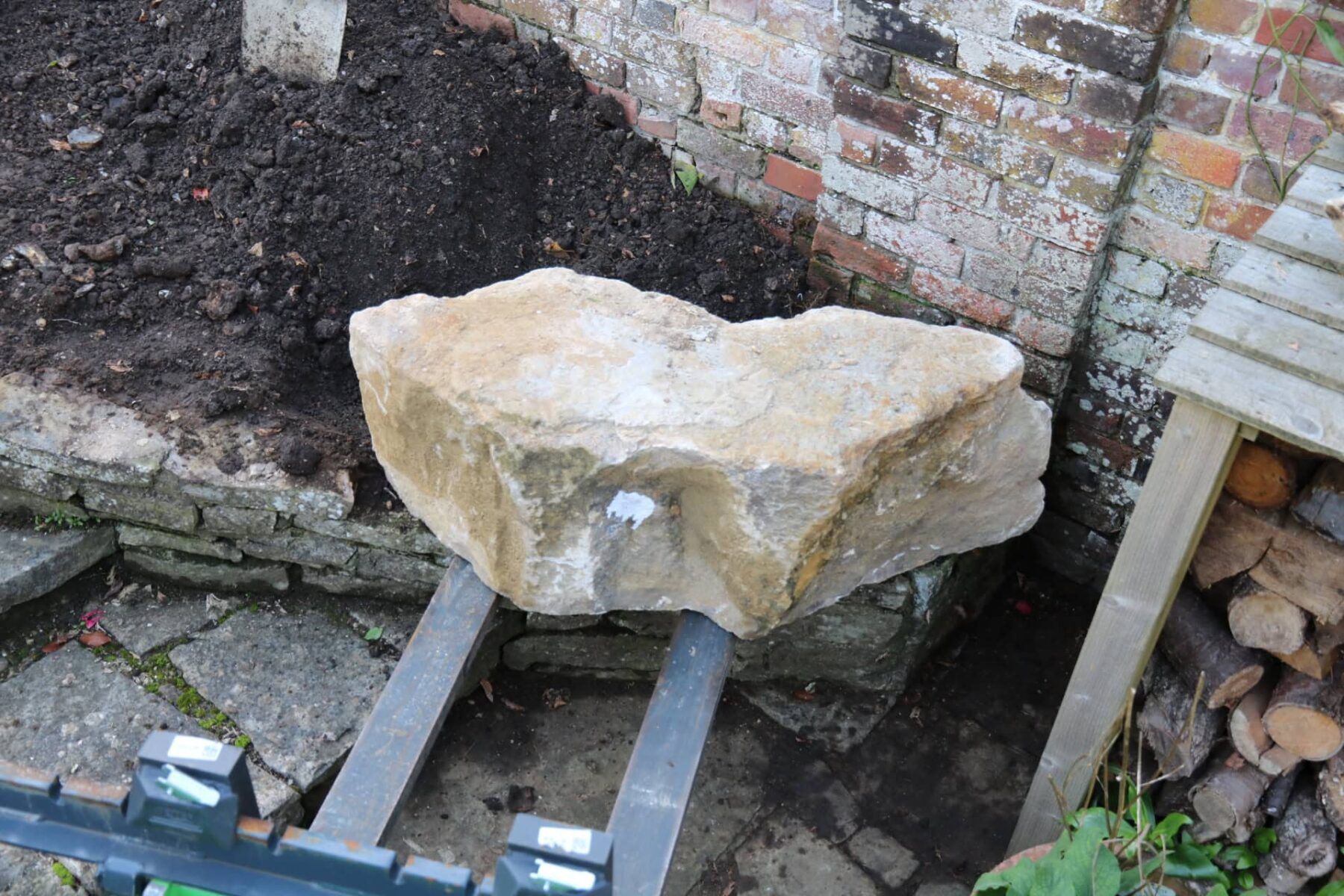 Placing first keystone, ensuring stability and natural integration with surrounding landscape
Placing first keystone, ensuring stability and natural integration with surrounding landscape
3.2. Adding the Middle Layer
Once the foundation is in place, add the middle layer of rocks. This layer will provide additional support and create planting pockets for your alpine plants.
- Arrange the Rocks: Arrange the rocks in a natural and aesthetically pleasing manner. Use a variety of sizes and shapes to create visual interest.
- Create Planting Pockets: Leave gaps between the rocks to create planting pockets. These pockets should be large enough to accommodate the root systems of your plants.
- Fill with Soil: Fill the planting pockets with the prepared soil mix.
3.3. Finishing Touches
The final layer of rocks will complete the structure of your rock garden. This layer should blend seamlessly with the middle layer and create a cohesive and natural look.
- Place the Rocks: Place the rocks in a way that complements the existing structure. Use smaller rocks to fill in gaps and create a smooth transition between the rocks and the soil.
- Add Gravel: Spread a layer of gravel over the soil surface. This will help retain moisture, suppress weeds, and create a more natural look.
- Incorporate Water Features: Consider adding a water feature, such as a small waterfall or pond, to enhance the aesthetic appeal of your rock garden.
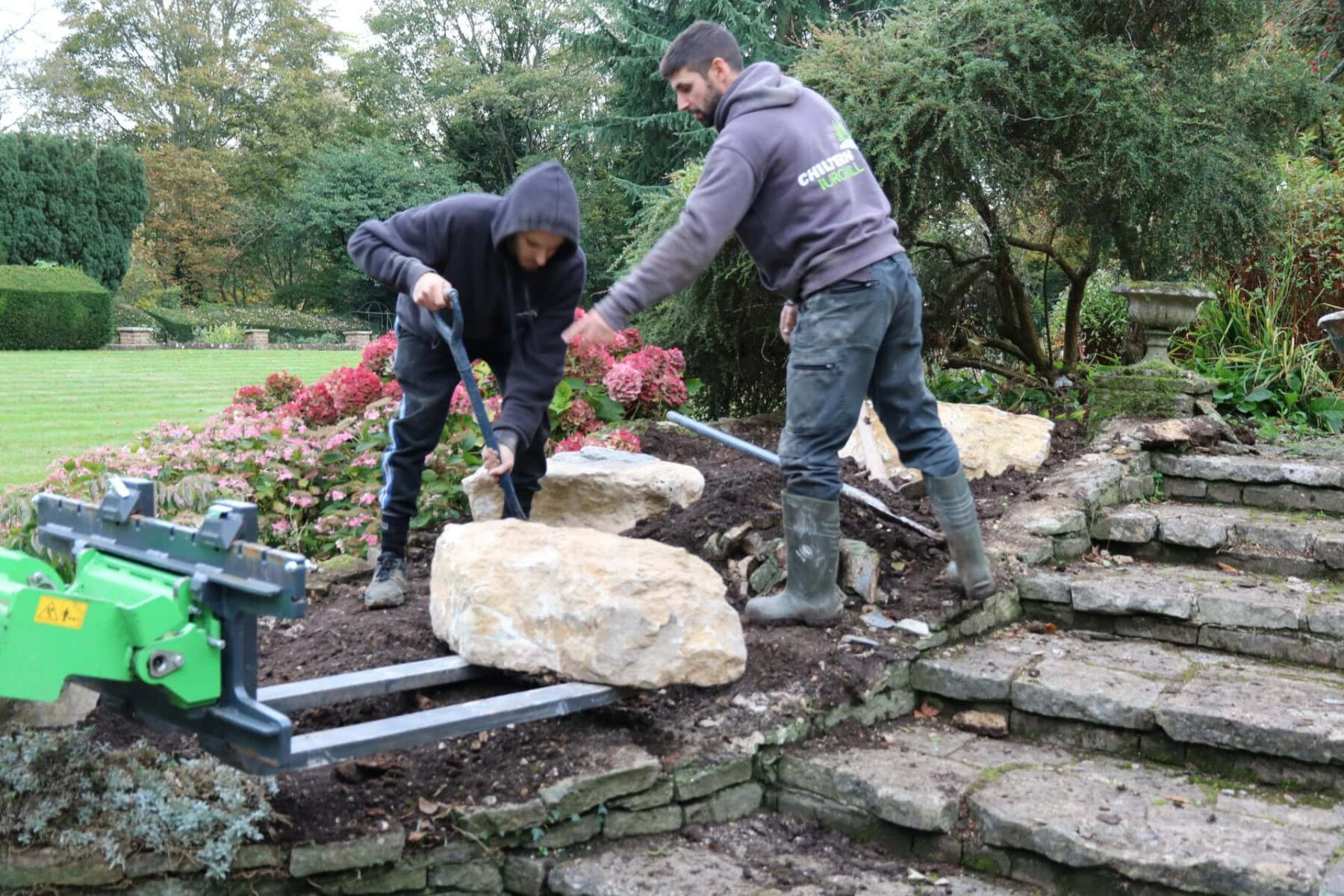 Placing the stones to enhance visual appeal and create planting pockets
Placing the stones to enhance visual appeal and create planting pockets
3.4. Integrate a Crevice Garden
The design and integration of a crevice garden into a rock garden can add a unique and visually appealing dimension to your landscape. Crevice gardens are characterized by closely packed vertical or angled rocks that create narrow planting spaces, mimicking natural crevices found in mountainous regions.
-
Select Appropriate Rocks: Choose flat, angular rocks such as slate, limestone, or sandstone that can be tightly packed together. The rocks should vary in size to create different crevice widths.
-
Create a Framework: Begin by placing larger rocks as a base to provide stability. Angle the rocks slightly to create crevices that range from narrow fissures to wider planting pockets. The depth of the crevices should accommodate the root systems of the plants you intend to grow.
-
Fill Crevices with Well-Draining Mix: The soil mix should be well-draining to prevent waterlogging. A mixture of equal parts grit, sand, and compost works well. Ensure the soil is packed firmly into the crevices to provide good root contact.
-
Select Suitable Plants: Choose plants that thrive in narrow spaces and well-draining conditions. Alpine plants, succulents, and small perennials are excellent choices. Consider the mature size of the plants to ensure they will not outgrow their spaces.
-
Planting Techniques: When planting, gently tease the roots to encourage them to spread into the crevices. Position the plants so their foliage can cascade over the rocks, enhancing the natural look of the crevice garden.
-
Watering and Maintenance: Water the crevice garden sparingly, allowing the soil to dry out between waterings. Remove any dead or yellowing foliage to keep the garden looking tidy. Top-dress with gravel to help retain moisture and suppress weeds.
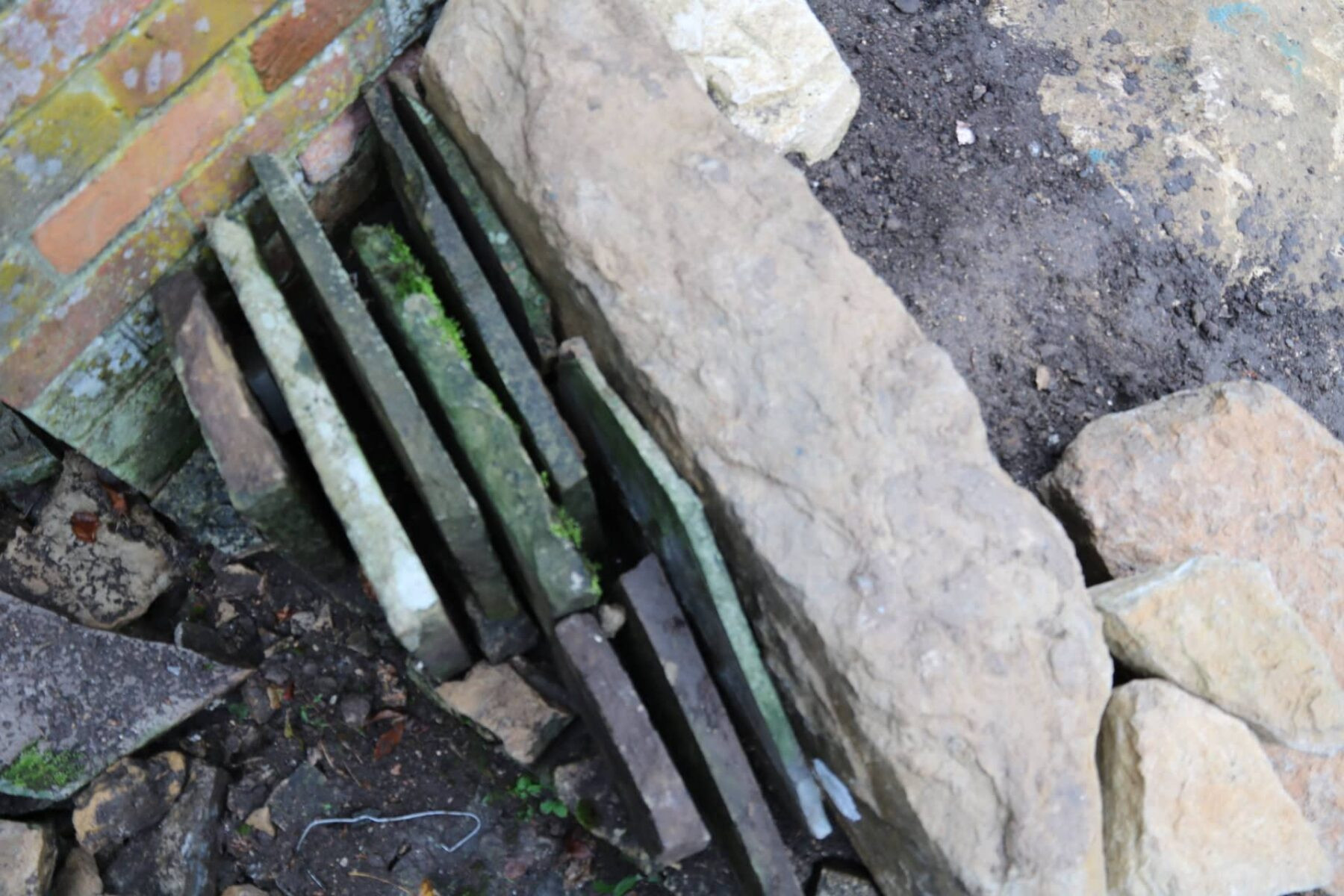 Making Crevice Garden
Making Crevice Garden
4. Choosing the Right Plants
Selecting the right plants is essential for creating a thriving and visually appealing rock garden. Alpine plants are well-suited for rock gardens due to their ability to tolerate harsh conditions and well-drained soil.
4.1. Popular Alpine Plants for Rock Gardens
- Sedums: These succulents come in a variety of colors and textures, adding visual interest to the garden. They are drought-tolerant and easy to care for.
- Sempervivums: Also known as “hens and chicks,” these succulents form rosettes of fleshy leaves. They are hardy and can tolerate extreme temperatures.
- Dianthus: These flowering plants produce fragrant blooms in shades of pink, red, and white. They prefer well-drained soil and full sun.
- Phlox: These low-growing plants produce masses of colorful flowers in spring and summer. They are ideal for cascading over rocks and creating a carpet of color.
- Thyme: This aromatic herb is drought-tolerant and produces small, fragrant leaves. It can be used as a ground cover or planted in crevices between rocks.
4.2. Planting Techniques
When planting alpine plants in your rock garden, consider the following techniques:
- Planting Depth: Plant the plants at the same depth they were in their original containers.
- Spacing: Space the plants according to their mature size.
- Watering: Water the plants thoroughly after planting.
- Mulching: Apply a layer of gravel mulch around the plants to retain moisture and suppress weeds.
4.3. Creating Planting Pockets
Planting pockets are essential for providing the right environment for your plants to thrive in a rock garden. Here’s how to create effective planting pockets:
- Choose the Right Location: Select spots between rocks that offer the right amount of sunlight and protection from wind.
- Prepare the Soil: Mix the existing soil with gravel, sand, and compost to improve drainage and provide nutrients.
- Create the Pocket: Dig a hole large enough to accommodate the plant’s root ball.
- Plant Carefully: Gently place the plant in the hole and backfill with the prepared soil mix.
- Water and Mulch: Water thoroughly and apply a layer of gravel mulch around the plant.
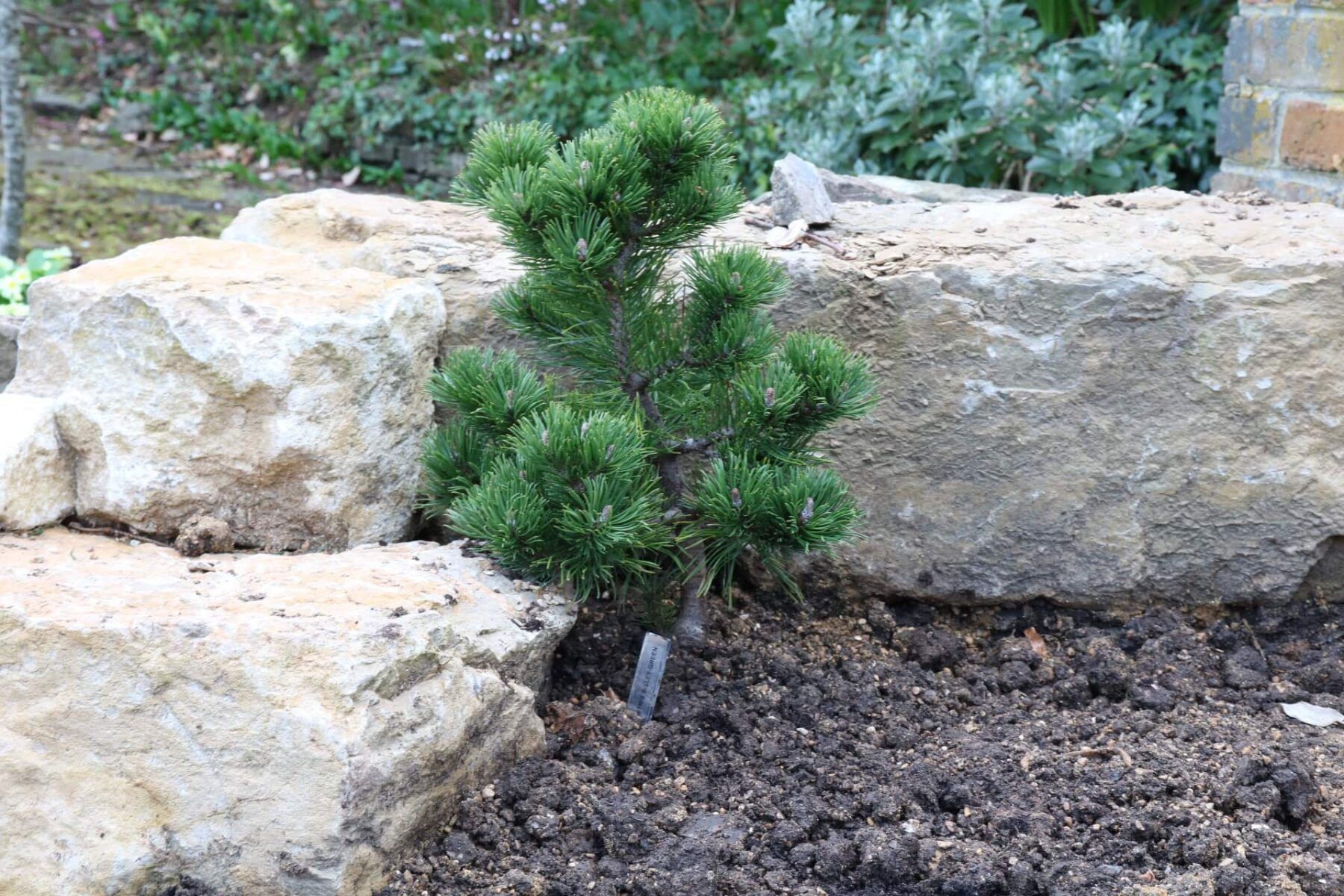 Conifer with stone background
Conifer with stone background
5. Maintenance and Care
Maintaining your rock garden will ensure it remains a beautiful and thriving landscape for years to come. Regular care includes watering, weeding, fertilizing, and pruning.
5.1. Watering Techniques
Alpine plants are adapted to dry conditions and do not require frequent watering. Water the plants deeply but infrequently, allowing the soil to dry out between waterings. Avoid overwatering, which can lead to root rot.
5.2. Weed Control
Weeds can quickly overtake a rock garden if left unchecked. Regularly remove weeds by hand or with a garden tool. Apply a layer of gravel mulch to suppress weed growth.
5.3. Fertilizing
Alpine plants do not require heavy fertilization. Apply a slow-release fertilizer in the spring to provide essential nutrients. Avoid using high-nitrogen fertilizers, which can promote excessive growth and reduce flowering.
5.4. Pruning
Prune alpine plants as needed to remove dead or damaged foliage. Trim back leggy growth to encourage bushier plants. Deadhead spent flowers to promote continued blooming.
5.5. Address Common Rock Garden Challenges
To ensure your rock garden remains a healthy and visually appealing landscape, it’s essential to address common challenges such as pest infestations and soil erosion. Implementing preventive measures and timely interventions can help you maintain the beauty and integrity of your rock garden.
-
Pest Management: Implement integrated pest management strategies to minimize the use of chemical pesticides. Encourage beneficial insects, such as ladybugs and lacewings, by planting companion plants like dill and yarrow.
-
Soil Erosion Prevention: Employ soil stabilization techniques to prevent erosion, especially on slopes. Incorporate ground cover plants with extensive root systems to bind the soil together.
-
Algae Control: Prevent algae growth by ensuring proper drainage and avoiding overwatering. Use natural algaecides or manually remove algae as needed to maintain the aesthetic appeal of water features.
-
Winter Protection Strategies: Protect sensitive plants from frost and snow by covering them with horticultural fleece or constructing temporary shelters. Mulch around the base of plants to insulate the soil and protect the roots from freezing temperatures.
-
Overcrowding Solutions: Thin out overgrown plants to prevent overcrowding and ensure each plant receives adequate sunlight and airflow. Divide perennials every few years to rejuvenate them and maintain their vigor.
6. Inspiration and Design Ideas
Looking for inspiration for your rock garden? Here are some design ideas to get you started:
6.1. Incorporating Water Features
Water features can add a dynamic and soothing element to your rock garden. Consider adding a small waterfall, stream, or pond to enhance the aesthetic appeal and create a more natural environment.
6.2. Using Native Plants
Using native plants in your rock garden can create a more sustainable and ecologically friendly landscape. Native plants are adapted to the local climate and soil conditions, requiring less water and maintenance.
6.3. Creating Vertical Interest
Adding vertical elements to your rock garden can create visual interest and depth. Consider using tall rocks, cascading plants, or climbing vines to draw the eye upward.
6.4. Explore Diverse Rock Garden Themes
Creating a rock garden theme can transform your outdoor space into a captivating and cohesive landscape. By selecting a theme that resonates with your aesthetic preferences and site conditions, you can create a harmonious environment that showcases the beauty of rocks and plants.
-
Mediterranean Theme: Evoke the sun-drenched landscapes of the Mediterranean by using warm-toned rocks such as sandstone and limestone. Incorporate drought-tolerant plants like lavender, rosemary, and thyme, which thrive in arid conditions. Add gravel mulch to enhance the dry, natural look.
-
Desert Theme: Replicate the stark beauty of the desert with a rock garden featuring succulents, cacti, and arid-adapted plants. Use rocks in shades of brown, red, and tan to mimic the desert landscape. Incorporate elements such as sand dunes and dry riverbeds to complete the theme.
-
Mountain Peak Theme: Capture the grandeur of a mountain peak by using large, jagged rocks to create a dramatic, elevated landscape. Plant alpine species such as sedums, sempervivums, and dwarf conifers, which are adapted to high-altitude environments.
-
Coastal Theme: Create a coastal-inspired rock garden with smooth, rounded rocks and plants that thrive in sandy soil and salty air. Incorporate elements such as driftwood, shells, and beach pebbles to enhance the coastal aesthetic. Plant sea thrift, beach grass, and other coastal species.
-
Zen Theme: Design a Zen rock garden with carefully arranged rocks, gravel, and sand to promote tranquility and contemplation. Use minimalist planting schemes and incorporate elements such as moss, ferns, and Japanese maples.
7. Finding the Right Resources
Building a rock garden can be a challenging but rewarding project. Finding the right resources can make the process easier and more enjoyable.
7.1. Local Nurseries and Stone Suppliers
Visit local nurseries and stone suppliers to find high-quality plants and rocks. These suppliers can provide expert advice and guidance on selecting the right materials for your rock garden.
7.2. Online Resources
Explore online resources, such as rockscapes.net, for inspiration, design ideas, and step-by-step guides. These resources can provide valuable information and support for your rock garden project.
7.3. Professional Landscapers
Consider hiring a professional landscaper to help with the design and construction of your rock garden. A landscaper can provide expert advice and ensure that your rock garden is built to last.
8. Conclusion: Embrace the Beauty of Rock Gardens
Building a rock garden is a rewarding project that can transform your outdoor space into a stunning and unique landscape. By following these steps and tips, you can create a rock garden that will thrive for years to come. Remember to choose the right rocks, prepare the soil properly, select appropriate plants, and provide regular maintenance. Visit rockscapes.net for more inspiration and resources to help you create the rock garden of your dreams.
Are you ready to elevate your landscape with the timeless beauty of a rock garden? Contact us today to explore our extensive collection of rocks, plants, and design ideas. Let rockscapes.net be your partner in creating a stunning outdoor oasis. Our Address is 1151 S Forest Ave, Tempe, AZ 85281, United States, Phone: +1 (480) 965-9011 and our website is rockscapes.net.
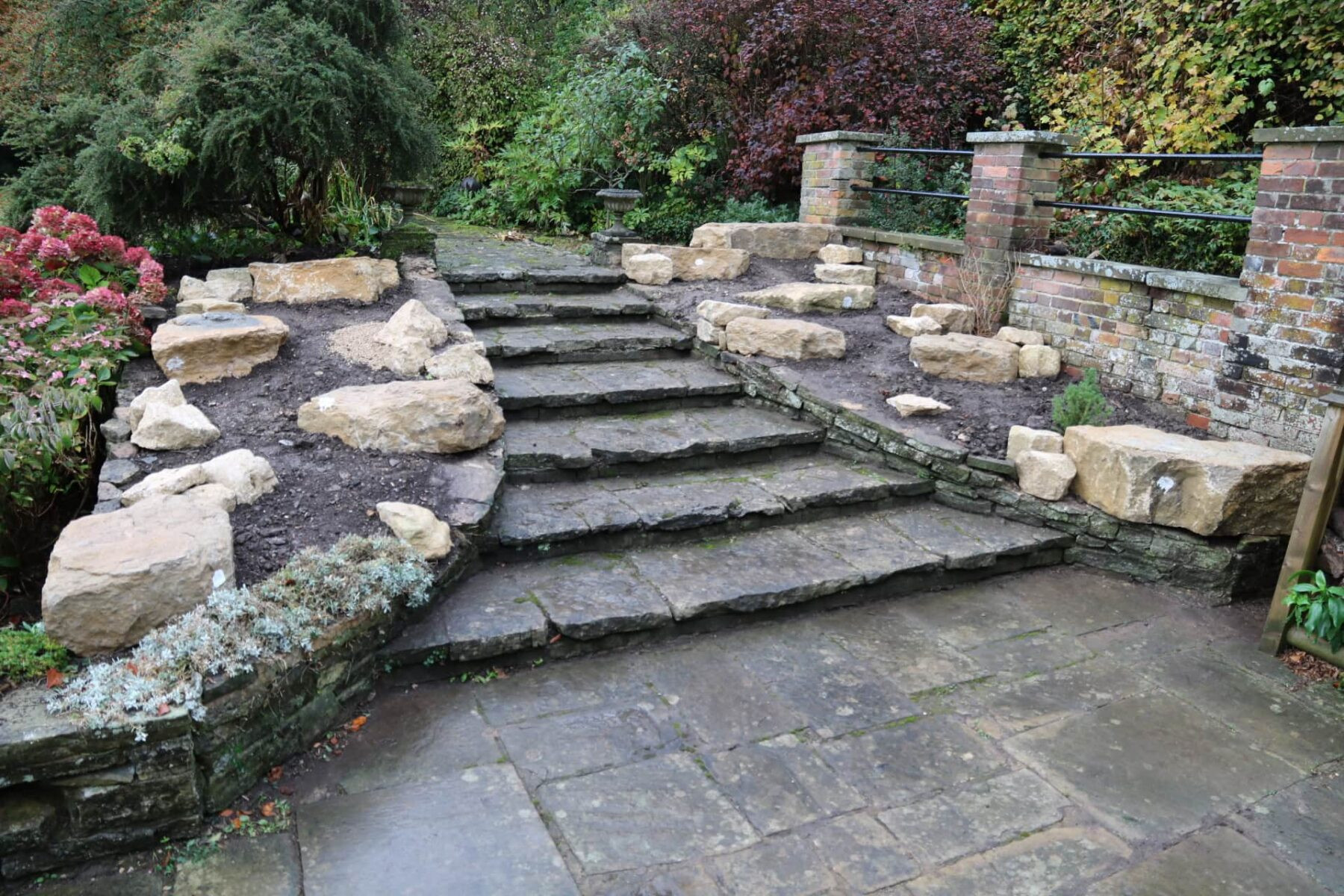 Final rock garden design
Final rock garden design
9. Frequently Asked Questions (FAQs) About Building Rock Gardens
9.1. What is the best location for a rock garden?
The best location for a rock garden is a sunny spot with well-draining soil, which ensures the plants receive enough sunlight and prevents waterlogging.
9.2. What types of rocks should I use for a rock garden?
Use native rocks like limestone, sandstone, or granite in varying sizes and shapes to create a natural look, enhancing the garden’s visual appeal.
9.3. How do I prepare the soil for a rock garden?
Mix the existing soil with equal parts of gravel, sand, and compost to improve drainage and provide essential nutrients, creating an ideal environment for alpine plants.
9.4. What are some popular plants for rock gardens?
Popular choices include sedums, sempervivums, dianthus, phlox, and thyme, as they are drought-tolerant and add color and texture to the garden.
9.5. How often should I water a rock garden?
Water deeply but infrequently, allowing the soil to dry out between waterings to prevent root rot and mimic the natural conditions of alpine environments.
9.6. How do I control weeds in a rock garden?
Regularly remove weeds by hand and apply a layer of gravel mulch to suppress weed growth, keeping the garden tidy and healthy.
9.7. Do rock gardens require fertilization?
Apply a slow-release fertilizer in the spring, avoiding high-nitrogen fertilizers to prevent excessive growth and promote flowering, maintaining a balanced environment for the plants.
9.8. How do I prune plants in a rock garden?
Prune as needed to remove dead or damaged foliage, trim back leggy growth, and deadhead spent flowers to encourage continued blooming and maintain the plants’ shape.
9.9. Can I add a water feature to a rock garden?
Yes, adding a small waterfall, stream, or pond can enhance the aesthetic appeal and create a more natural environment, providing a dynamic and soothing element to the landscape.
9.10. Is it better to use native plants in a rock garden?
Using native plants can create a more sustainable and ecologically friendly landscape, as they are adapted to the local climate and soil conditions, requiring less water and maintenance.